One of the most commonly used systems in floorball is 2-1-2 or informally known as the dice five. It is by far the most popular defensive system out there and employed by the national team of Finland as well as by those who are new to the game. It is a successful tactic, especially in defense and one of the easiest to learn.
But when we say it’s easiest, that doesn’t mean it’s easy. What they say about the poker game Texas Hold’em also applies to the 2-1-2 system: “A minute to learn… a lifetime to master“.
Whether you are new completely new to the game, have just been promoted to captain of your team (with all the tactical responsibilities that come with it, sigh) or with years of coach experience under your belt, you will find something useful in this article.
After reading this article you will have a grip on the basics of the most popular defensive system in floorball, whether it’s to enhance your own floorball knowledge or whether it’s to be able to explain it better to others.
So in this article, we look at the 2-1-2 formation. We cover the basics of the system and the purpose behind it. If you want to go to the specific sections, you can click on them to jump there.
Index
- The basics of the 2-1-2 system in floorball
- What percentage are you defending?
- Ball side / Help side
- Is 2-1-2 a viable attacking strategy?
So without further ado, let’s get started!
The basics of the 2-1-2 system in floorball
We start very basic and slowly build from there. The picture shows what is meant by 2-1-2:

Our team, the blue crosses, defends the lower goal (the two rectangles). The dice five is clearly visible: two defenders, one center and two forwards.
The basic purpose of the 2-1-2 floorball system (defensively)
Dice five is a system mainly used for defending, so in this article, we’ll focus mostly on the defensive aspect.
Let’s start with an easy question to get you warmed up. What is the purpose of defending?
To stop the opponent from scoring a goal. Let’s hope you got that one right.
And how do you win a floorball game?
Yes, also an easy question! You have to score at least one goal more than your opponent.
These may look like trivial questions but there is something important to consider here: every goal you concede will take you further away from winning the game. And if you’re familiar with floorball, you know the following already: goals don’t come easy in floorball. At all. We’re perhaps not on the same level as soccer where most games end in 1-0 but compared to other sports, scoring goals is tough.
With few goals to be distributed in the average floorball game, getting your defense right is even more important because it will make a huge difference.
But where do we start?
Let’s start with the most dangerous thing known to mankind: the slot.

Slot, not sloth!
The slot refers to the space in front of the goal, as shown in the green image below:

The slot is one of the most important parts of the field. If the opponent has the ball in this area, there is a higher chance that they will score because they are close to the goal.
You don’t want to see your opponent in this area while having the ball!
Image 2 shows at a glance how the 2-1-2 system helps to protect the slot. Is the opponent close (i.e., on our half)? Then the forwards fall down to help keep the opponent out of the slot.

Look at image 3. It’s fine for your opponent to have the ball in the green parts. Are they in the orange part, then you start applying pressure.
Red part? Red alert: put pressure on the ball directly!
Let’s call this our Rule #1.
Repeat after me: “our opponents will NOT have the ball in the slot without being pressured”.
Now gather all your teammates, place your hands on your hearts and say after me: “our opponents will NOT have the ball in the slot without being pressured”.
Now we all solemnly swore an oath to protect the slot, it’s time to bring some details.
In floorball, you sometimes have possession of the ball, but often not. When you don’t have possession, you have to be patient. If there is a lack of time – you are one point behind with only a few minutes left to play – you should apply high pressure, but we will deal with that another time.
Normally, however, you are not in a hurry, so you should wait for your opponent. Image 3 shows the zones (roughly) where your opponent is allowed to play ball Do they play around on their own half? No problem!
Are they coming towards the centerline? Then the two forwards will slowly start to put pressure on them. If they play the ball forward along the boarding, then pressure should also start to be applied.
The most important thing, however, has already been mentioned: as soon as the opponent with the ball is in the red or orange area, at least some pressure will have to be applied to prevent a shooting chance.
What percentage are you defending?
Floorball is a team sport. There is only one player in each team that has the superpower to stop attacks by himself and it’s not you … it’s your goalkeeper. The rest of us mere mortals are much less effective individually in preventing the other team to score goals … unless we work together.
This brings us to our Rule #2: Communication is key!
Communication cannot only save a marriage but also save your team from conceding goals. How wonderful!
That means you have to consult as a team and/or line on how you play defensively. One of the most important points in the 2-1-2 system is determining how ‘high’ you stand. See the images below for more information:

In the image above we see a 2-1-2 with quite high pressure. This may be a preparation for a full-press attack but doesn’t necessarily have to be the case.

This is probably the most common execution of playing 2-1-2 in a team with the forwards positioned around the middle line. An example of this would be Sweden vs Finland in the WFC2016 finals.
It’s even possible to be more defensive, then it would look something like this:

In the three scenarios, the dice five is used as the system but at different heights or percentages.
In Figure 4 the team is very high: up to 80%, in Figure 5 the more popular percentage of 60% is used, and in Figure 6 the team drops very far down to about 40-50%.
Below you can see the heights at which you can play. From a defensive point of view (as a starting position in the dice five) you almost always keep 55-65%. Depending on your opponent, you can choose to either move up or drop back.
If you play against a worse opponent, then you as a forward can run up and show them who’s boss! Someone should teach these bunch of people a lesson, right?
Wrong!!! You forgot Rule #2! A system only works when everybody works towards the same goal, so whatever you want to do, make sure your team backs you up.
Now let’s assume you listened to me and that you and your team indeed want to go higher pressure. Then the forwards will slowly move up to 70%, 80% or even 100% (high pressure).
But if you play against a strong opponent, you’ll notice that you’ll automatically be pushed back up to 40-50%.

Ball side / Help side
In all the above examples, we were working with our own team, the 2-1-2 system and focused on our positioning, but this is only the basis.
As you know, floorball is usually played against a group of bad guys who want to make your goalkeeper’s life as miserable as possible and who will try to do everything within their capabilities to bombard your goal with shots.
Time to bring them in!
Remember the positions we mentioned earlier? The dice five? Well, if we always stay in these positions, the opponent can play the ball around us endlessly.
At a certain point, you want to force the opponent to make a mistake, in order to conquer the ball and thus prevent your opponent from scoring, and even better, trying to score yourself. Yay!
For this purpose, we introduce two new definitions: ball side and help side.
The ball side, in the example below, concerns the right side of the pitch, because that is where the ball is. The help side is the left side of the pitch, separated by the green line (which of course is not shown in real life unless if you have a really fancy hall).

The dice five when there would be no opponents.

Now we’re getting started! This is how a team could position itself when they have the ball in the corner. Also, notice the dice five structure is left untouched and how this means that some defenders are defending “air”. For example, the center, who is responsible for defending the slot, the most dangerous area in floorball, is pretty much useless right now. Time to move some pieces!

Much better, right? Also, consider how these new positions align perfectly with my Rule #1. Remember how you and your teammates swore an oath on this rule? Well, this is how it would look like if you all take that oath seriously and want to do everything to keep that ball out of the slot. The players are positioned to keep the ball out of the slot. The only viable passing option for the ball carrier is to pass it to the player behind the goal – which is a green zone.
What is the aim of this ball side and help side?
First of all, the ball side wants to make the options as difficult as possible for the opponent. The opponent has no possibilities to get into the slot himself or give a pass into that area. Therefore he is forced to choose to pass to the player behind our goal or a hard pass back to his own half.
The help side wants to help where possible but generally does not cross the green line. The reason is simple: if the opponent manages to move the ball – i.e. to get the ball to the other side of the field, seen in the width of the field – someone from our team must always be ready to receive this new attack. In addition, as the picture above shows, it is not necessary for the help side to still get close to the ball.
What happens if the ball is moved anyway?
If the opponent manages to get the ball from the right side to the left side of the pitch, then it means we’re all out of position and our opponents will most likely score.
No, don’t panic! Everything is fine!

We simply draw a new situation, where the opponent has played the ball past the goal and then passes back to the last man.

Okay, now we moved the ball and the opponents. However, we didn’t touch our own players yet. Below, you see how our team adapts to the new situation.

In the new situation, the dice five starts to look a bit less ‘clear’, but it’s still there. The tricky thing about this situation is that the center actually has to be quite far away from its zone in order to cover the player at the boarding. I myself would always advise leaving the center in the slot – think back to Figure 3, the red zone – but you can discuss this among yourself in your team.
Is 2-1-2 a viable attacking strategy?
“Enough with the defense, I want to score goals!” – The average floorball forward ever
Can you use the dice five as an offensive strategy, too?
In my opinion, the dice five is purely a defensive system. However, the steps from the defensive 2-1-2 to an attacking formation is quite small: one of the forwards goes deep, while the other forward drops slightly which will turn the 2-1-2 in an into an offensive and pretty common 1-3-1 formation.
But this, boys and girls, will be the subject of another article.
Summary
In this article, we discussed the basics of the dice five system. In follow-up articles, we want to discuss the role of each player individually. What does the forward do, what is forechecking, why does the center (not) have to get out, which side of the player has to block the defender, etc. To be continued!
Do you have additions to this article, or questions or suggestions? Let us know in the comments!

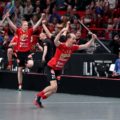

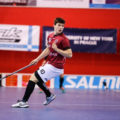
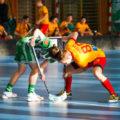
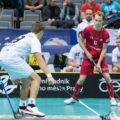
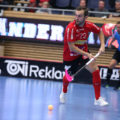
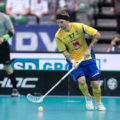
No Comments
Leave a comment Cancel